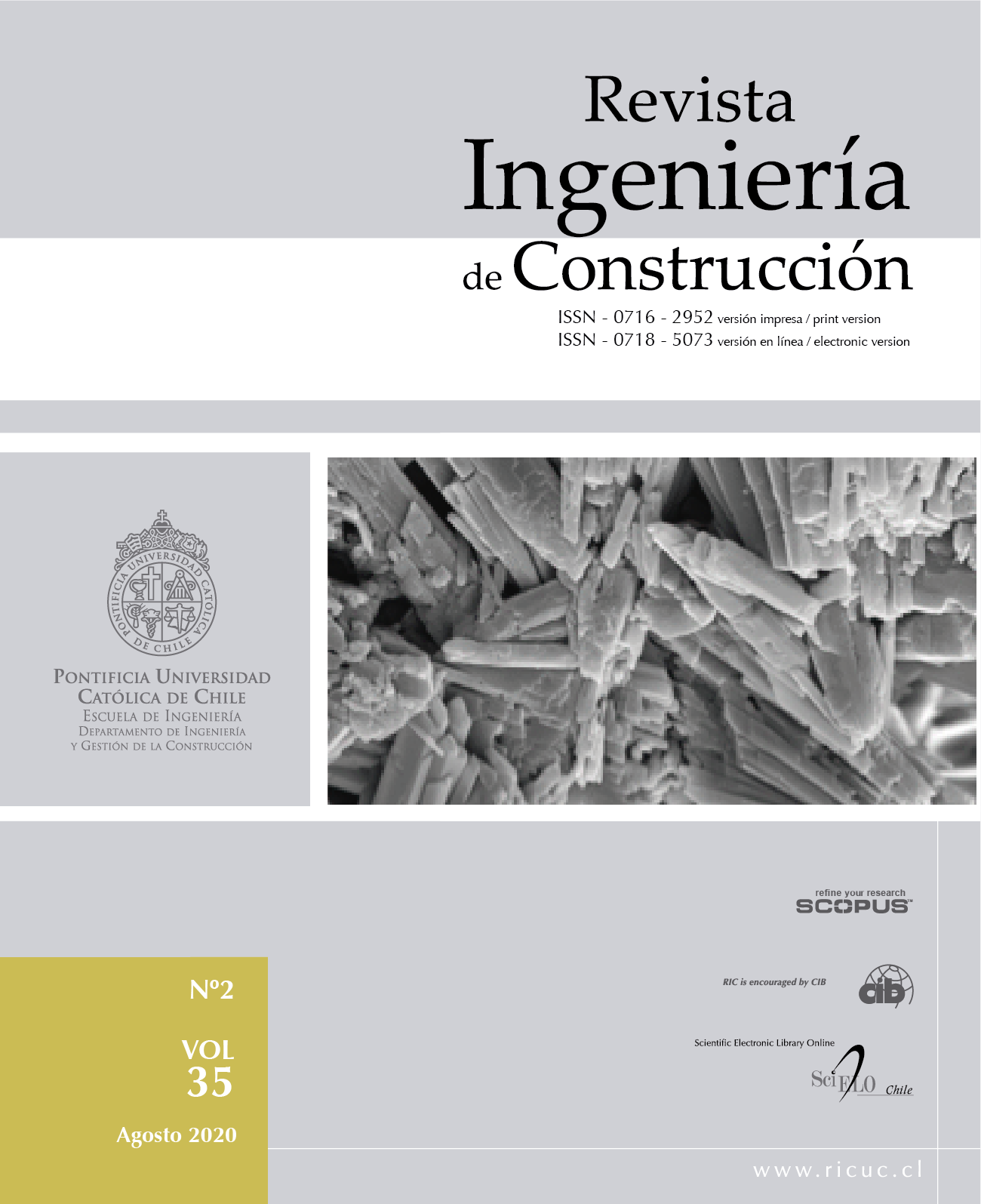Performance of plaster composites incorporating rubber tire particles
Keywords:
Gypsum composites, tire rubber, alternative material, physical-mechanical characterizationAbstract
Gypsum is the oldest synthetic construction material that is known, however it is a material about which there is little knowledge at the level of research, and in this work its study took place by making composites with the incorporation of rubber tires, aiming to obtain an alternative construction material. Thus, the objective was to investigate gypsum-based composites, with a mass incorporation of 5, 10, and 15% of two grades of vulcanized rubber residue from tire retreading processes. The granulometries are referred to as thin (sieve pass-through #0.60 mm) and thick (sieve pass-through #1.19 mm). The composites were investigated in terms of consistency (mini-slump), mass density, water absorption, surface hardness, flexural strength, compressive strength, scanning electron microscopy (SEM), and thermal behavior. The results revealed that rubber incorporation can be attractive in gypsum composites: in which the consistency decreased with the increase of the rubber content and the thick rubber granulometry favored the workability of the composites; the mass density was reduced, mainly with thin granulometry, as the rubber content in the composites increased; the water absorption showed that the high levels of rubber favor the penetration of water in the composites, regardless of the granulometry; the surface hardness showed reduced impact energy provided by the composite with 10% thin rubber; in both flexural strength and compression, the composite with 5% thin rubber showed a similar result to the control composite, while composites with 15% rubber suffered a gradual drop of up to 60 and 40%, respectively; with SEM it was observed that the thin rubber composites had smaller pores, in addition to more effective adhesion between the rubber particles; finally the rubber helps to reduce the thermal amplitudes during the day, mainly with the increase of the particle size and the rubber content.


